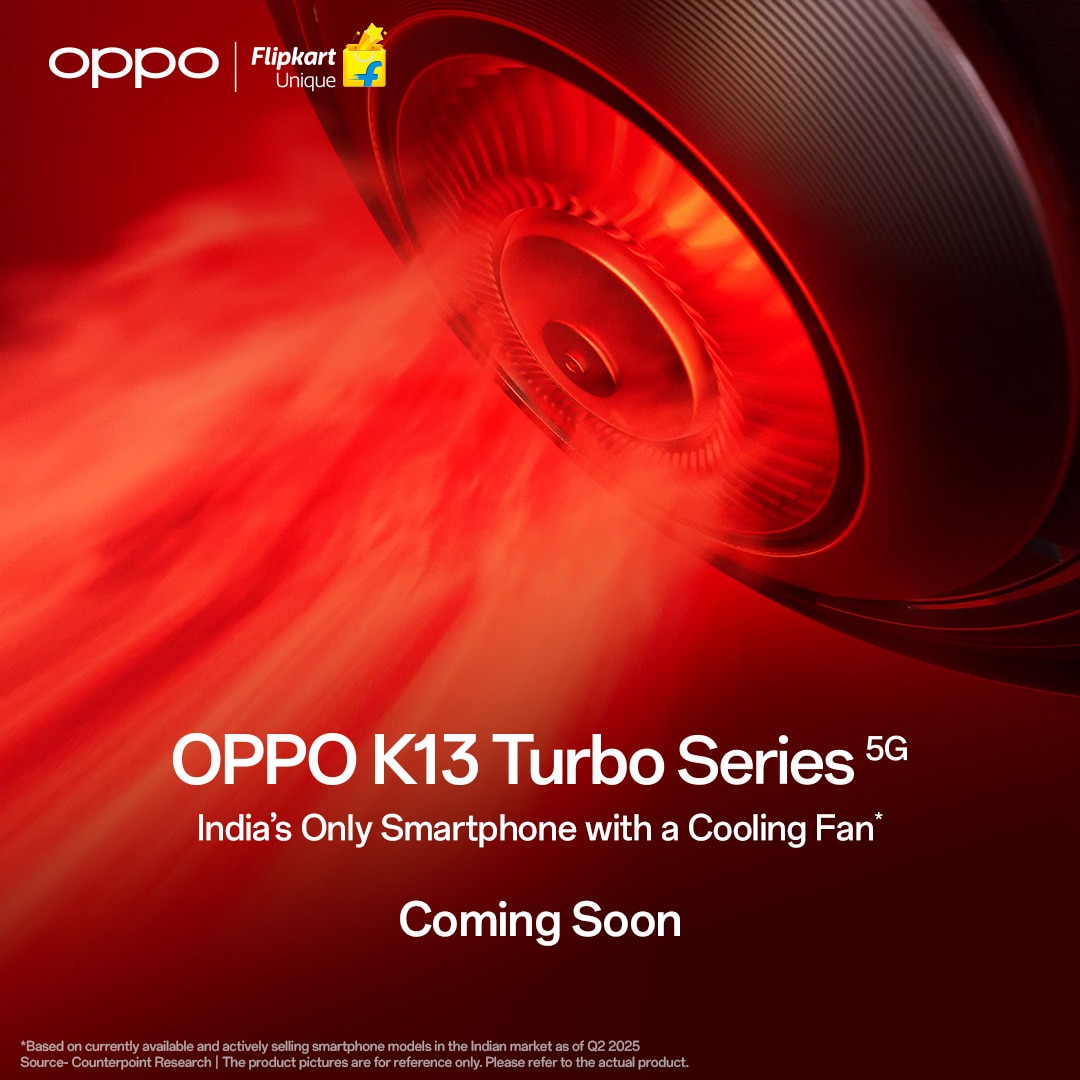India’s First Smartphone With A Fan? All You Need To Know About Oppo K13 Turbo
Oppo has announced its K13 Turbo Series in India, and it comes with a feature no other phone in the country offers yet: a built-in centrifugal cooling fan. Yes, an actual mechanical fan, tucked inside the smartphone’s chassis, designed to keep thermals in check during intense gaming sessions.
With the K13 Turbo and K13 Turbo Pro, Oppo is targeting users who’ve had enough of performance dips and overheating during long hours of gaming or multitasking. The company claims these devices are capable of running cooler by 2°C to 4°C during games like BGMI, thanks to a multi-layered cooling approach that combines both active and passive heat management.
There is no word on the launch date, but the Oppo K13 Turbo will be available for purchase via Flipkart soon.

A Real Fan, Not Just Marketing Air
At the heart of the cooling system is Oppo’s new Storm Engine, a hardware-level cooling solution that includes a centrifugal fan spinning at 18,000rpm. Unlike external clip-on coolers or purely passive graphite layers, this is an integrated mechanism. It’s designed with ultra-thin 0.1mm blades, claimed to be 50% thinner than conventional fans, which push more air through a redesigned L-shaped duct inside the phone.
This isn’t just about airflow for the sake of spec sheets. The fan intelligently kicks in based on temperature and workload, and users can also manually enable it through Game Assistant. It cools the processor directly and helps the phone avoid thermal throttling, a common issue where the processor slows down to prevent overheating.
“Games run smoothly without sudden frame drops, even during long, demanding sessions,” Oppo said in a statement. “There is no thermal throttling.”
Passive Cooling Still Plays A Big Role
While the fan does the heavy lifting during peak performance loads, Oppo hasn’t skimped on passive elements. The K13 Turbo Series also features a large 7000mm² vapour chamber and a 19,000mm² graphite sheet. These materials help passively disperse heat from the CPU, battery, and display, ensuring the phone stays cool during general multitasking or charging.
In practical terms, this means a more stable gaming experience, fewer heating issues during video calls or social media use, and a phone that remains comfortable to hold even outdoors.
Durability Meets High Performance
Despite integrating a mechanical fan, Oppo claims the phone is built to withstand rough usage and exposure to the elements. The fan module is water-resistant with IPX6, IPX8, and IPX9 ratings, thanks to the use of sealed joints and advanced protective layers.
Interestingly, the company has managed to squeeze all this cooling tech into the phone without sacrificing battery life; in fact, the battery size has been increased to 7,000mAh. That’s 600mAh more than its predecessor, all while maintaining a sleek profile.
With the K13 Turbo Series, Oppo appears to be betting big on thermal engineering as a differentiator in the crowded mid-range smartphone market. The inclusion of a built-in fan, previously seen only in select gaming-focused phones, signals a shift towards more serious mobile gaming hardware in the mainstream.
Whether this innovation catches on or remains a niche appeal, Oppo has made one thing clear: overheating is no longer just a spec-sheet inconvenience. It’s a design challenge they’re taking head-on, with a fan.
technology